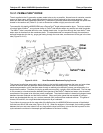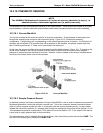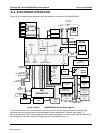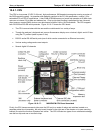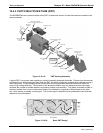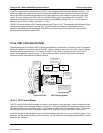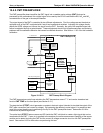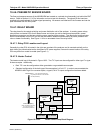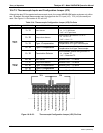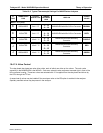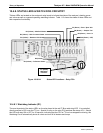
Teledyne API - Model 200EH/EM Operation Manual Theory of Operation
211
10.4.1.1. Disk On Chip
Technically, the disk-on-chip is an EEPROM, but appears to the CPU as, behaves as, and performs the same
functions in the system as an 8 mb disk drive, internally labeled as DOS drive C:\. It is used to store the
computer’s operating system files, the Teledyne Instruments firmware and peripheral files, and the operational
data generated by the analyzer’s internal data acquisition system (iDAS - Sections 10.7.5 and 6.7).
10.4.1.2. Flash Chip
The flash chip is another, smaller EEPROM with about 64 kb of space, internally labeled as DOS drive B:\. The
M200EH/EM CPU board can accommodate up to two EEPROM flash chips. The M200EH/EM standard
configuration is one chip with 64 kb of storage capacity, which is used to store the analyzer configuration as
created during final checkout at the factory. Separating these data onto a less frequently accessed chip
significantly decreases the chance of data corruption through drive failure.
In the unlikely event that the flash chip should fail, the analyzer will continue to operate with just the DOC.
However, all configuration information will be lost, requiring the unit to be recalibrated.
10.4.2. SENSOR MODULE, REACTION CELL
Electronically, the M200EH/EM sensor assembly (see Figure 9-6) consists of several subassemblies with
different tasks: to detect the intensity of the light from the chemiluminescence reaction between NO and O
3
in
the reaction cell, to produce a current signal proportional to the intensity of the chemiluminescence, to control
the temperature of the PMT to ensure the accuracy and stability of the measurements and to drive the high
voltage power supply that is needed for the PMT. The individual functions are described individually below,
Section 11.6.6 shows the sensor assem
bly and its components.
10.4.2.1. Reaction Cell Heating Circuit
The stability of the chemiluminescence reaction between NO and O
3
can be affected by changes in the
temperature and pressure of the O
3
and sample gases in the reaction cell. In order to reduce temperature
effects, the reaction cell is maintained at a constant 50 C, just above the high end of the instrument’s operation
temperature range.
Two AC heaters, one embedded into the bottom of the reaction cell, the other embedded directly above the
chamber’s exhaust fitting, provide the heat source. These heaters operate off of the instrument’s main AC
power and are controlled by the CPU through a power relay on the relay board (Section 10.4.7). A thermistor,
also embedded in the bottom of the reaction cell, reports
the cell’s temperature to the CPU through the
thermistor interface circuitry of the motherboard (Section 0).
04521C (DCN5731)



